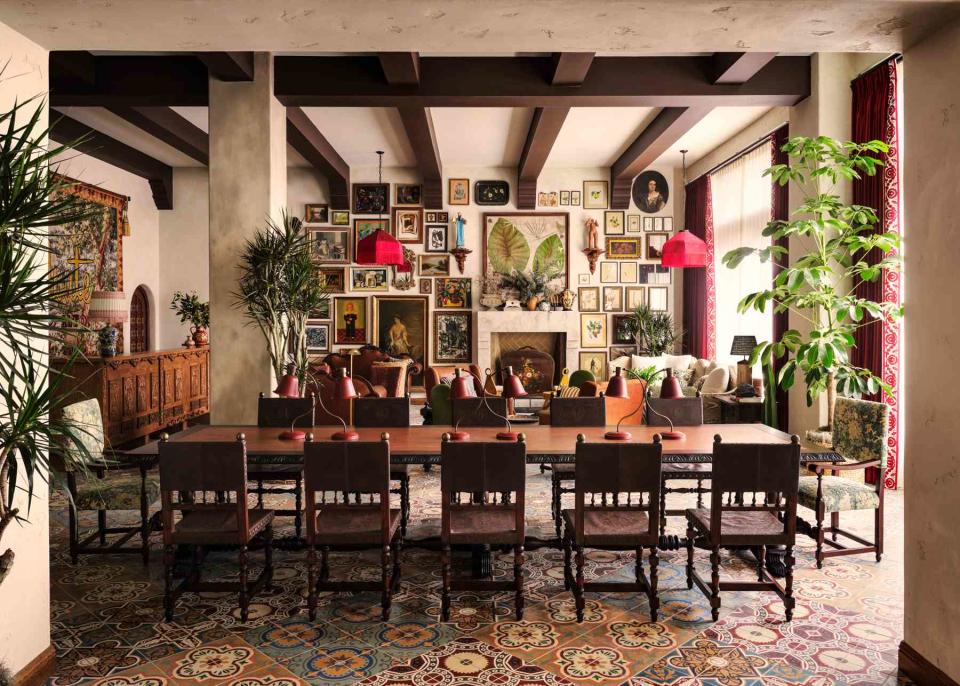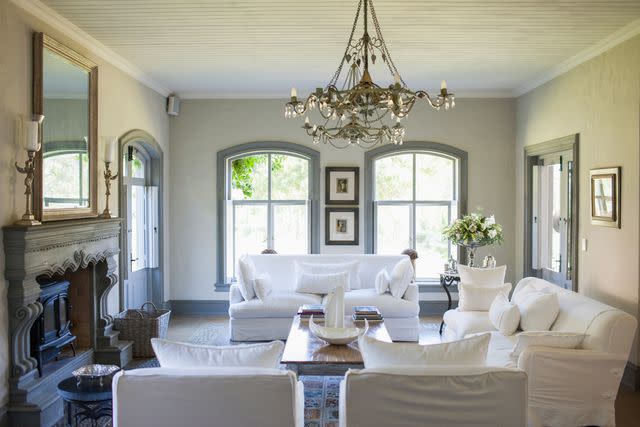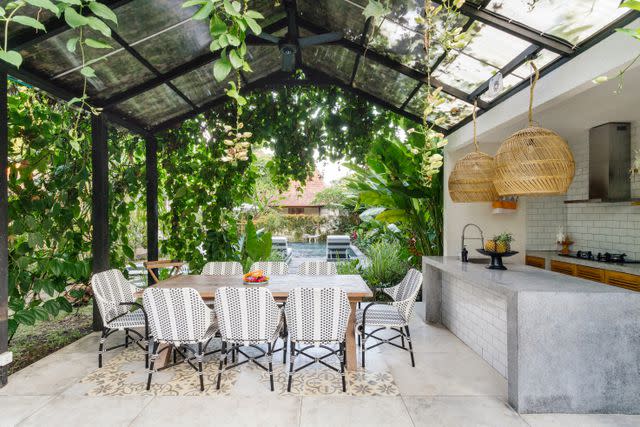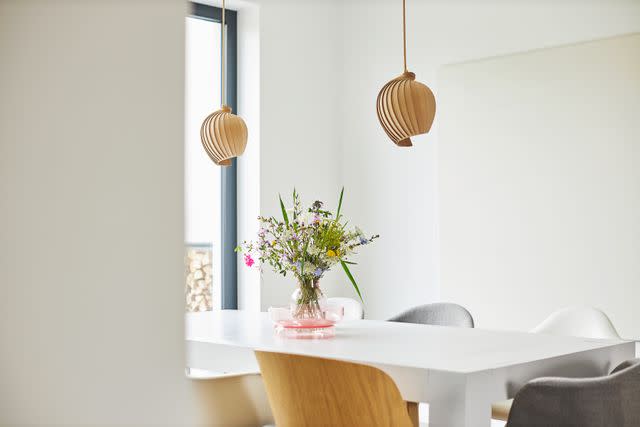6 Decorating Tricks That Will Make Your Home Feel Like an Inviting Hotel
Hotel interior designers share their expert advice for creating a curated (never cold) home.

The most beautifully designed hotels have a way of combining home-like comforts with a sense of elevated luxury. They're the kind of spaces where—the second you step foot inside—you instantly feel your shoulders relax and your mind slow down; you can't help but look around and take it all in. It’s no wonder we wish we could bottle up some of that refinement and bring it home with us.
Take the Graduate Palo Alto, for example, which previously operated as the historic Hotel President from 1930 through the '60s. The recent top-to-bottom refresh was inspired by the building’s original Spanish Colonial architecture, nearby Stanford campus, and California’s unique botany. This organic infusion of local details and a thoughtful curation of old and new has created a warm, welcoming atmosphere. “As soon as you step through the front door, we just want you to feel comfortable, cozy, and inspired,” says Krissy Melendez, who led the redesign project for Graduate Palo Alto (she's also the head of design at Adventurous Journeys). “There are so many [woven-in] details. Everything we do is so thoughtful and every detail matters.”
Want your own home to have that considered, luxurious hotel feel? It's certainly possible: Simply borrow a few hotel décor tricks for your space. Ultimately, it’s the combination of leaning into existing features, tapping into the essence of the community, digging for old treasures, and curating new gems that allows you to create a home that’s authentic and inviting. Apply these principals to your house to create a similar ambience for you family—and any guest that walks through your doors.
Related: 14 Living Room Décor Ideas Every Homeowner Should Try
Tap Into What Inspires You

KhongkitWiriyachan / GETTY IMAGES
Draw inspiration from elements that speak to you. Maybe it’s the organic details of your geography, a movie or era that you’ve always loved, or a hotel that you never tired of revisiting. For the Wayback Hotel in Austin, Texas, nature served a guiding light throughout the design process. “Whether it's a gorgeous tree-lined view through a window or a private patio, we made nature the star, which helps create a relaxing and restorative vibe,” says Kelly Moseley, the hotel’s interior designer. “Our goal was to have guests feel like our hotel is an experience as much as a place to rest their heads.”
Sarah Wetenhall, owner of The Colony Hotel in Palm Beach, Fla., agrees. She says there’s a general fear of design being “too personal"—there's a misconception that personal touches detract from high design. “Personally, I believe design should feel deeply personal, through images, artifacts, or themes that resonate,” Wetenhall says. “Our de Gournay lobby wallpaper is laced with personal motifs and hidden meaning throughout, and is part of its charm.”
Allow your sources of inspiration to permeate not just the big details, but the small ones, too. Aim to feel excited about every color, object, piece, and view in your home.
Lean Into Original Architecture and Location

Tom Merton / GETTY IMAGES
Emma Pearson, interior designer for the Cashel Palace Hotel in Ireland, and her team saw the property's refresh as a chance to honor its original architecture. (Melendez and the Graduate Palo Alto team did the very same by drawing inspiration from details of the Spanish Colonial building they were working in.) “Our approach to design was to respect the bones of the structure we were working with while creating a space that is welcoming and timeless,” says Pearson. “Our aim was to make guests feel as though they are returning to an Irish country home.”
This looks different for every home, of course. For example, if you live in an adobe-style house in the desert, then lean into the soft earthiness and muted tones. Or if you’re decorating a beach house on the East Coast, look to bright and airy spaces with nautical details.
Avoid Furniture Sets—Mix and Match Instead

Vlajs / GETTY IMAGES
It’s easy to walk into a furniture store and buy the three-piece set, but this often creates a lackluster, uninspired result. Instead, take notes from hotel interior designers and flex your creative muscles; experiment with mixing and matching shapes, colors, and fabrics. “Our furniture is an eclectic mix of any style so that whether you're 18 or 80, you can connect with something,” says Melendez. “It's really about that classic approach to design where maybe if you were to see these pieces individually you wouldn't necessarily think they go together, but once they're all in the same atmosphere and layered, the curation of all of those different forms comes to play.”
This eclectic approach prevents your designs from feeling like a dated time capsule three, five, or 10 years down the line, Melendez says. It also feels more purposeful when you choose each piece by hand.
Prioritize Layered Lighting

alvarez / GETTY IMAGES
Even the most beautifully decorated homes won't shine if they have poor lighting. Moseley says to avoid harsh and glaring overhead lights, and to incorporate a mix of task, ambient, and accent lighting, instead. Light temperature matters, too: “Use warm settings on LED lights in bedrooms and living spaces, use bright, clean, and cool light in kitchens, utility rooms, and bathrooms, and add a simple pendant light or lamp in dining spaces,” she says. “While lamps can be placed in various places in a home, they should definitely be in bedrooms where you want to feel restful.”
Related: 3 Types of Home Lighting and How to Layer Them to Create a Beautiful and Functional Room
Incorporate Communal Spaces

brizmaker / GETTY IMAGES
Creating communal spaces is something that well-designed hotels do really well. In fact, it's usually a priority in the design process. Whether it’s cozy seating nooks for intimate groups to gather or open spaces that provide room for a larger bunch, communal spaces are where memories are made. “We make it a point to have a communal table that welcomes gathering around your neighbor,” notes Melendez. “[Our goal] is to build more room for people at our table and invoke that sense of community and camaraderie.”
In your home, this might translate to something like a conversation pit, an extended dining table, or an outdoor seating area with enough space for everyone to sit and catch up after a long day.
Add Fresh Plants and Flowers

2K Studio / GETTY IMAGES
Living plants and freshly picked bouquets instantly breathe life into a space. "Even if you don't have a green thumb, you can find easy-to-maintain plants at your local nursery and place them in planters that can add texture and color,” Pearson says. “Flowers are a small way to feel like you are living in luxury. It feels wonderful to wake up to a vase of roses at your bedside or a colorful mane of tulips that give an old antique table a fresh, modern feel.”

